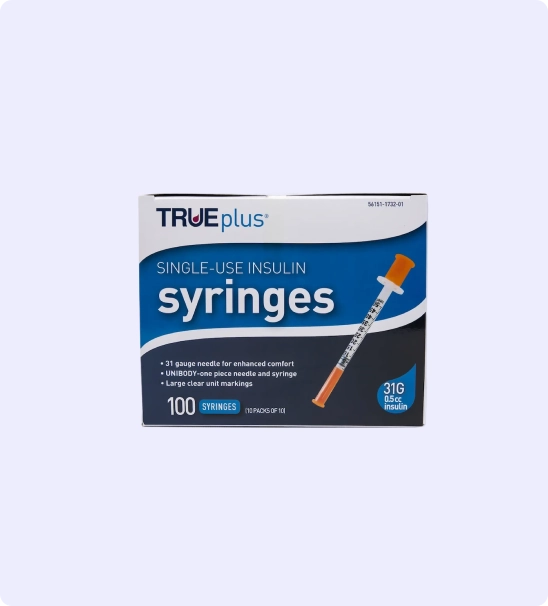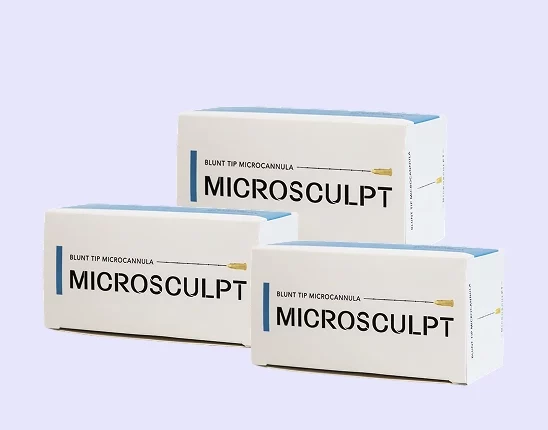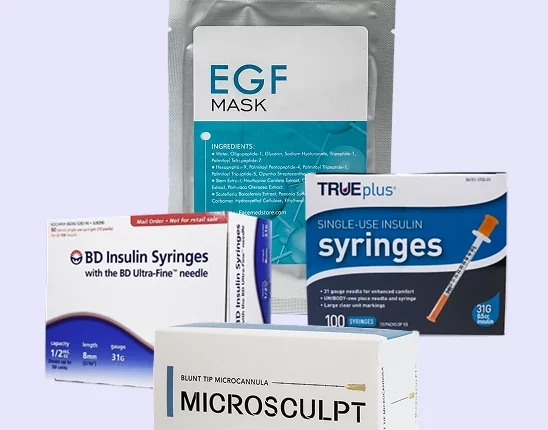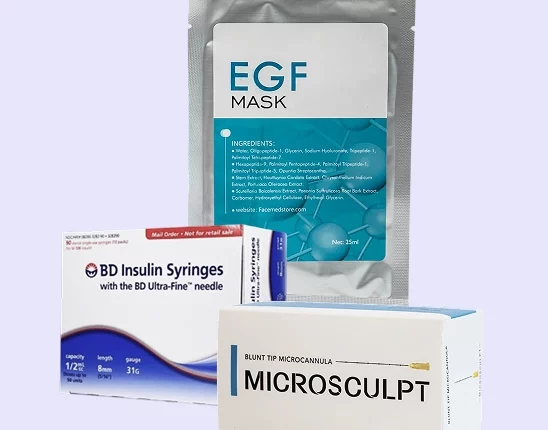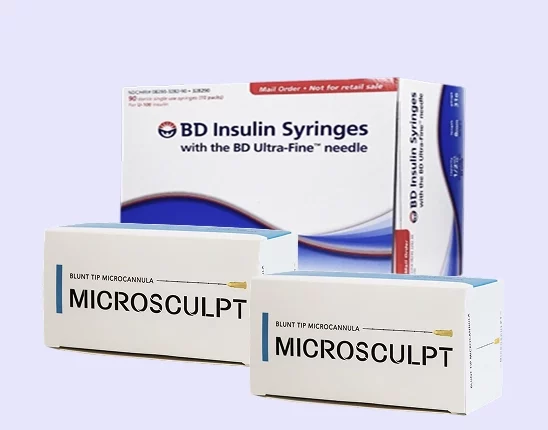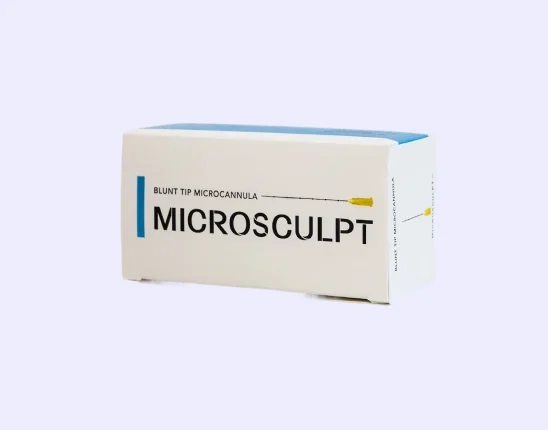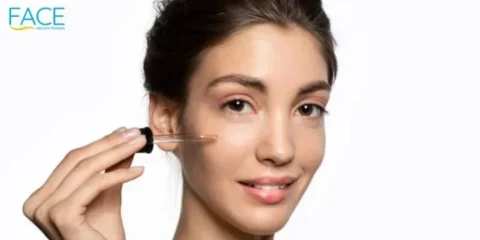Sculptra (or New-Fill) has steadily gained popularity among dermal fillers to fill in areas in the face with longer-lasting results. However, it still suffers from the usual drawbacks of injectable fillers: the post-operative aftercare required after the procedure and the tools used in the treatment itself.
So how can the use of cannulas or needles affect Sculptra treatments? Overall, cannulas may offer more advantages because Sculptra works better with more filler. Needles are still a viable alternative, but with less versatility than cannulas.
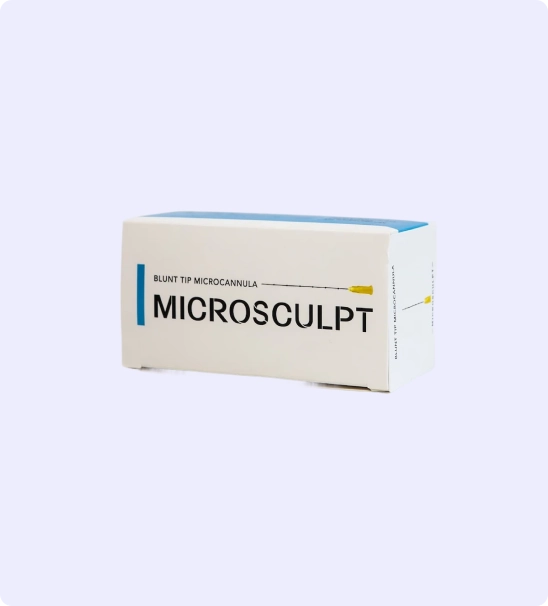
Injections Your Patients Will Love! Code “20OFF” Takes 20% off Your First Order!
Microcannulas are a tool that every great injector must master. Patients want quick results with no downtime. Our microcannulas are high quality and a fraction of the price of our competitors!
You can create an account here.
Sculptra Application: Cannula vs. Needle
Post-operative issues like bruising, bleeding, swelling, scarring, or inflammation are common complaints of patients that have used dermal fillers. While these conditions will usually go away with a few days of extended rest, these issues can still affect overall patient satisfaction with the procedure.
This issue occurs primarily because of the usual method used to apply injectable fillers. Traditional needle fillers are still the medical tool of choice used by most dermatologists and cosmetic practices with injecting dermal fillers in the body.
While they have a proven history of efficacy, they have some inevitable drawbacks because of how they work. This has made alternative tools such as blunt-tip cannulas rise in popularity with using injectable dermal fillers.
Ultimately, the choice of using a needle or a cannula will depend on the dermatologist’s experience with either tool and the patient’s comfort levels with the procedure. However, there are certain situations where Sculptra application is easier when using needle or cannula on the injection area.
When To Use Cannulas For Sculptra Treatment
Using cannulas for Sculptra treatments gives a few advantages to dermatologists, but the most significant is that it makes the application of dermal fillers easier in the deep dermis or subcutaneous layers.
Depending on the amount of Sculptra needed with each treatment, cannulas can provide better entry points, wider treatment area, and more consistent flow with filler application. It also allows them to treat larger areas of the body since the cannulas can be maneuvered from one entry point.
Patients who undergo Sculptra treatments via cannula may find the procedure less painful, as the cannula tip is designed to push, not penetrate the skin. This allows it to nudge aside major blood vessels and arteries, decreasing the risk of puncturing them during filler application. Since only one entry point is required, the patient experiences less pain because there’s only one area of active trauma in the body that they need to recover from.
When To Use Needles For Sculptra Treatment
Dermatologists are more likely to be trained with using needles for dermal fillers like Sculptra, and it’s this familiarity with the tool that can make needle treatments more viable. Familiarity with the application tool is crucial when using injectables since it allows the dermatologist to apply the filler without making mistakes. If the injector has more skill with using needles than cannulas, it’s safer for them to use the tool that they already know.
For patients, Sculptra treatments that use needles may give them better results with their filler area. Because of the relatively short length of the needle compared to a cannula, dermatologists find it easier to control the needle during filler injection. This allows them to deliver smaller amounts of filler on fine lines and wrinkles, especially in areas with thin or sensitive skin.
Can Cannulas And Needles Be Used In The Same Area?
Depending on the overall treatment plan, the amount of filler required, and the skill of the dermatologist, using both cannulas and needles with Sculptra treatments is highly feasible. In fact, using both tools can greatly improve the results from Sculptra treatments, especially if there’s a wide area of treatment.
One thing to keep in mind when using both tools is to allow ample time for the body to heal between sessions. Under no circumstances should dermatologists encourage simultaneous use of cannulas or needles, since the patient’s skin may not handle the trauma from multiple injection areas.
Dermatologists will also need to keep in mind the pain tolerance of the patient and their overall experience with using dermal fillers, as each procedure can feel vastly different for the patient.
Get High-Quality Medical Devices And Products From FACE Medical Supply
-
 Microcannula Multi-Gauge Precision Set
Microcannula Multi-Gauge Precision Set -
 Microcannula Complete Injection System
Microcannula Complete Injection System -
 Microcannula Size Progression Training Kit
Microcannula Size Progression Training Kit -
 Microcannula Professional Starter Kit
Microcannula Professional Starter Kit -
 Microcannula Volume Practice Pack
Microcannula Volume Practice Pack -
 23 gauge 50 mm (2 inch) Microcannulas
23 gauge 50 mm (2 inch) Microcannulas -
 22 Gauge 100 mm (4 inch) Microcannulas.
22 Gauge 100 mm (4 inch) Microcannulas. -
 27 Gauge 38 mm (1.5 inch) Microcannulas
27 Gauge 38 mm (1.5 inch) Microcannulas -
 25 Gauge 38 mm (1.5 inch) Microcannulas
25 Gauge 38 mm (1.5 inch) Microcannulas
Sculptra treatments can be done with cannulas or needles, with the best option left up to the dermatologist and their discussion with their patients. Cannulas are excellent choices if the patient is looking for a relatively painless procedure and the treatment area needs a considerable amount of filler. Needles are a better option if the dermatologist has more experience with them and they’re dealing with a smaller filler area.
At FACE Medical Supply, we stock high-quality medical tools like cannulas and needles at affordable prices. This way, cosmetic practices can feel secure by offering alternatives with their services without having to worry about sourcing or their overall expenses. Contact us today to learn what products we stock and how to order from us.
Read more: What is the Best Hypodermic Needle Alternative?
